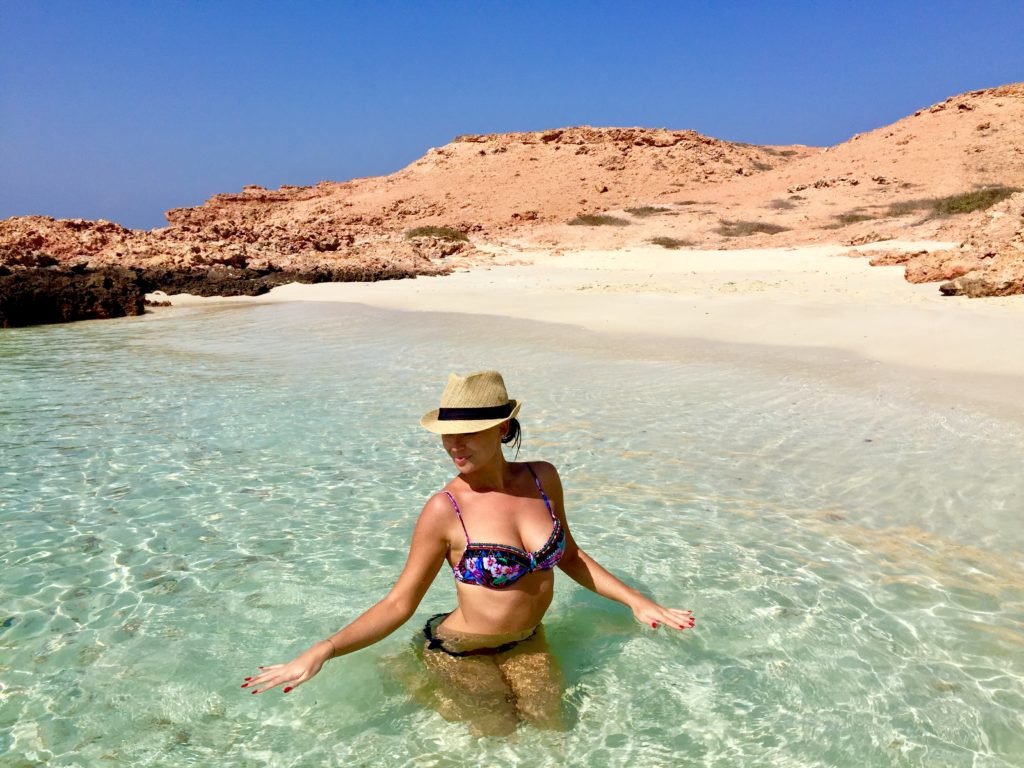Oman, a country that beautifully marries tradition with modernity, is an underrated gem in the Middle East. With its rich history, stunning landscapes, and warm hospitality, Oman offers an immersive travel experience that caters to adventure seekers, history enthusiasts, and nature lovers alike. From the golden dunes of the desert to the crystal-clear waters of the Indian Ocean, Oman’s diverse attractions provide an unforgettable journey into one of the most enchanting countries on the Arabian Peninsula.
1. Why Visit Oman?
Oman offers a unique perspective on the Arabian Peninsula, standing out for its commitment to preserving its culture and natural beauty. Unlike some of its neighboring countries, Oman has maintained its historical architecture and traditions while embracing the conveniences of modern life. This blend of ancient and contemporary creates a unique travel experience, with bustling souks, opulent forts, and traditional Bedouin lifestyles contrasting with modern infrastructure and luxury hotels.
Additionally, Oman is one of the safest and most hospitable countries in the region, welcoming visitors with open arms. The Omanis are known for their kindness and pride in their country, eager to share their rich culture with travelers.
2. Best Places to Visit in Oman
2.1 Muscat: A Blend of History and Modernity
Muscat, the capital city, is a perfect starting point for exploring Oman. With its waterfront location, grand mosques, and vibrant souks, it offers an excellent introduction to the country’s mix of tradition and innovation.
- Sultan Qaboos Grand Mosque: One of the most magnificent landmarks in Oman, the Sultan Qaboos Grand Mosque is a must-visit. Its stunning architecture, intricate Islamic art, and one of the world’s largest chandeliers and carpets make it a symbol of Omani culture and craftsmanship. Visitors are welcome to explore the mosque, with respectful dress and behavior.
- Mutrah Corniche and Souk: The Mutrah Corniche, with its scenic views of the harbor and mountains, is ideal for a leisurely stroll. Nearby, the bustling Mutrah Souk offers a sensory overload of sights and smells, from spices and perfumes to traditional Omani silver and handicrafts.
- Royal Opera House: As a testament to Oman’s dedication to the arts, the Royal Opera House in Muscat is one of the most beautiful cultural centers in the region. Visitors can enjoy performances ranging from opera and ballet to local and international concerts.
2.2 Nizwa: The Cultural Heart of Oman
Nizwa, known as the “Pearl of Islam,” was once the capital of Oman and remains a vital cultural hub. The city is famous for its historic forts, bustling souks, and traditional Omani crafts.
- Nizwa Fort: One of Oman’s most iconic forts, Nizwa Fort is a stunning example of traditional Omani architecture. Its massive circular tower offers panoramic views of the surrounding date plantations and mountains. Inside, you’ll find exhibits that showcase Oman’s history and military prowess.
- Nizwa Souk: A visit to Nizwa Souk offers a chance to experience the region’s traditional way of life. The Friday livestock market is particularly lively, where locals buy and sell goats, sheep, and cattle. The souk is also renowned for its silver jewelry, pottery, and traditional daggers (khankjars).
2.3 Jebel Akhdar and Jebel Shams: Oman’s Mountain Treasures
For those who love adventure and natural beauty, Oman’s mountainous regions are a must. The Al Hajar mountain range offers dramatic landscapes, cool climates, and excellent hiking opportunities.
- Jebel Akhdar (Green Mountain): Known for its terraced farms and fruit orchards, Jebel Akhdar is a lush contrast to the surrounding arid desert. It’s famous for the cultivation of roses, pomegranates, and apricots, with the rose harvest being a particularly beautiful sight in the spring.
- Jebel Shams (Mountain of the Sun): As the highest peak in Oman, Jebel Shams offers breathtaking views of Oman’s “Grand Canyon.” The hiking trails here, particularly the Balcony Walk, provide dramatic scenery and are popular with adventurers.
2.4 Wahiba Sands: The Heart of the Desert
The Wahiba Sands, also known as the Sharqiya Sands, is a vast desert landscape that stretches over 12,000 square kilometers. It’s the quintessential Arabian desert, with rolling dunes and a seemingly endless horizon.
- Desert Camps: A night in the desert is a must when visiting Oman. Several desert camps offer a blend of adventure and comfort, where you can experience traditional Bedouin hospitality, enjoy a camel ride, and gaze at the starry night sky.
- Dune Bashing and Sandboarding: For thrill-seekers, the towering dunes of Wahiba Sands provide the perfect terrain for dune bashing in a 4×4 or sandboarding down the slopes.
2.5 Wadis: Oases of Refreshing Beauty
Oman’s wadis, or valleys, are natural oases that offer respite from the heat and are perfect for swimming, hiking, and picnicking. The combination of rocky cliffs, lush greenery, and crystal-clear pools makes these spots some of the most beautiful in the country.
- Wadi Shab: Accessible by a short boat ride, Wadi Shab is one of the most popular wadis in Oman. A hike through the wadi leads to stunning pools, and for the more adventurous, a swim through a narrow cave reveals a hidden waterfall.
- Wadi Bani Khalid: Another stunning wadi, Wadi Bani Khalid, is known for its large, deep pools that are perfect for swimming. The wadi is surrounded by date palms and dramatic cliffs, creating a serene and picturesque landscape.
2.6 Salalah: A Tropical Oasis in the Desert
Located in the southern Dhofar region, Salalah offers a stark contrast to the rest of Oman’s arid desert landscapes. During the khareef (monsoon) season, from June to September, the area transforms into a lush, green paradise, attracting both locals and tourists.
- Al Mughsail Beach: Known for its dramatic cliffs and blowholes, Al Mughsail Beach is a stunning stretch of coastline with turquoise waters and white sands. The blowholes, especially during high tide, create impressive water spouts.
- Frankincense Land: Salalah is also known for its production of frankincense, a valuable resin that has been traded for centuries. A visit to the Frankincense Land Museum or the nearby frankincense trees in the desert provides insight into this ancient trade.
3. Outdoor Adventures in Oman
Oman is a playground for outdoor enthusiasts. Whether it’s climbing mountains, exploring caves, or snorkeling in crystal-clear waters, Oman’s diverse landscapes offer a wide range of activities.
- Snorkeling and Diving: The waters around Oman are home to vibrant coral reefs, diverse marine life, and several shipwrecks. The Daymaniyat Islands near Muscat are a popular spot for snorkeling and diving, where you might encounter turtles, rays, and even whale sharks.
- Caving: For the more adventurous, Oman offers several cave systems, including the impressive Majlis al Jinn, one of the largest underground chambers in the world. The caves provide opportunities for exploration, abseiling, and spelunking.
- Rock Climbing: The Al Hajar Mountains offer excellent rock climbing opportunities, with challenging routes for both beginners and experienced climbers.
4. Omani Cuisine: A Taste of Tradition
Oman’s cuisine is a delicious reflection of its cultural diversity and history as a trading hub. Influenced by Arabian, Indian, and East African flavors, Omani food is rich, flavorful, and full of spices.
- Shuwa: A traditional Omani dish typically served during celebrations, shuwa is marinated lamb or goat that’s slow-cooked in an underground sand oven for up to 48 hours. The result is tender, flavorful meat that falls off the bone.
- Majboos: Also known as Kabsa, this rice dish is spiced with saffron, cardamom, and other Middle Eastern spices, usually served with chicken, lamb, or fish.
- Dates and Coffee: Omani hospitality often begins with dates and a cup of kahwa (Omani coffee), which is spiced with cardamom and often served with rose water or saffron.
5. Adult entertainment
Oman is a conservative country with strict laws and regulations regarding nightlife and adult entertainment. As such, there are limited options for nightlife and adult entertainment in Oman. The sale and consumption of alcohol are strictly regulated, and there are no nightclubs or bars in the country.
When it comes to adult entertainment, there are no legal escort services operating in Oman. Prostitution is illegal in the country, and those found engaging in such activities can face severe penalties, including imprisonment and deportation. It is important to respect the laws and cultural norms of the country when visiting Oman and refrain from seeking out adult entertainment services.
Overall, if you are looking for nightlife and adult entertainment, Oman may not be the ideal destination. It is best to explore other aspects of the country, such as its rich history, stunning landscapes, and traditional culture, rather than seeking out activities that may not be in line with the local laws and customs.

6. Best Time to Visit Oman
The best time to visit Oman is during the cooler months, from October to April, when temperatures are pleasant and ideal for outdoor activities. The winter months, especially from November to February, offer mild weather, making it perfect for exploring the cities, deserts, and mountains.
The Khareef season in Salalah (June to September) is a unique time to visit if you want to experience the region’s monsoon season and its lush, green landscapes.
Conclusion
Oman is a treasure trove of natural beauty, culture, and adventure waiting to be explored. Its friendly people, diverse landscapes, and rich history make it a destination that caters to every type of traveler. Whether you’re wandering through ancient forts, diving into the clear blue waters of the Arabian Sea, or savoring the flavors of traditional Omani cuisine, Oman promises an experience that will leave a lasting impression on all who visit.



















No one commented yet. Be the first.